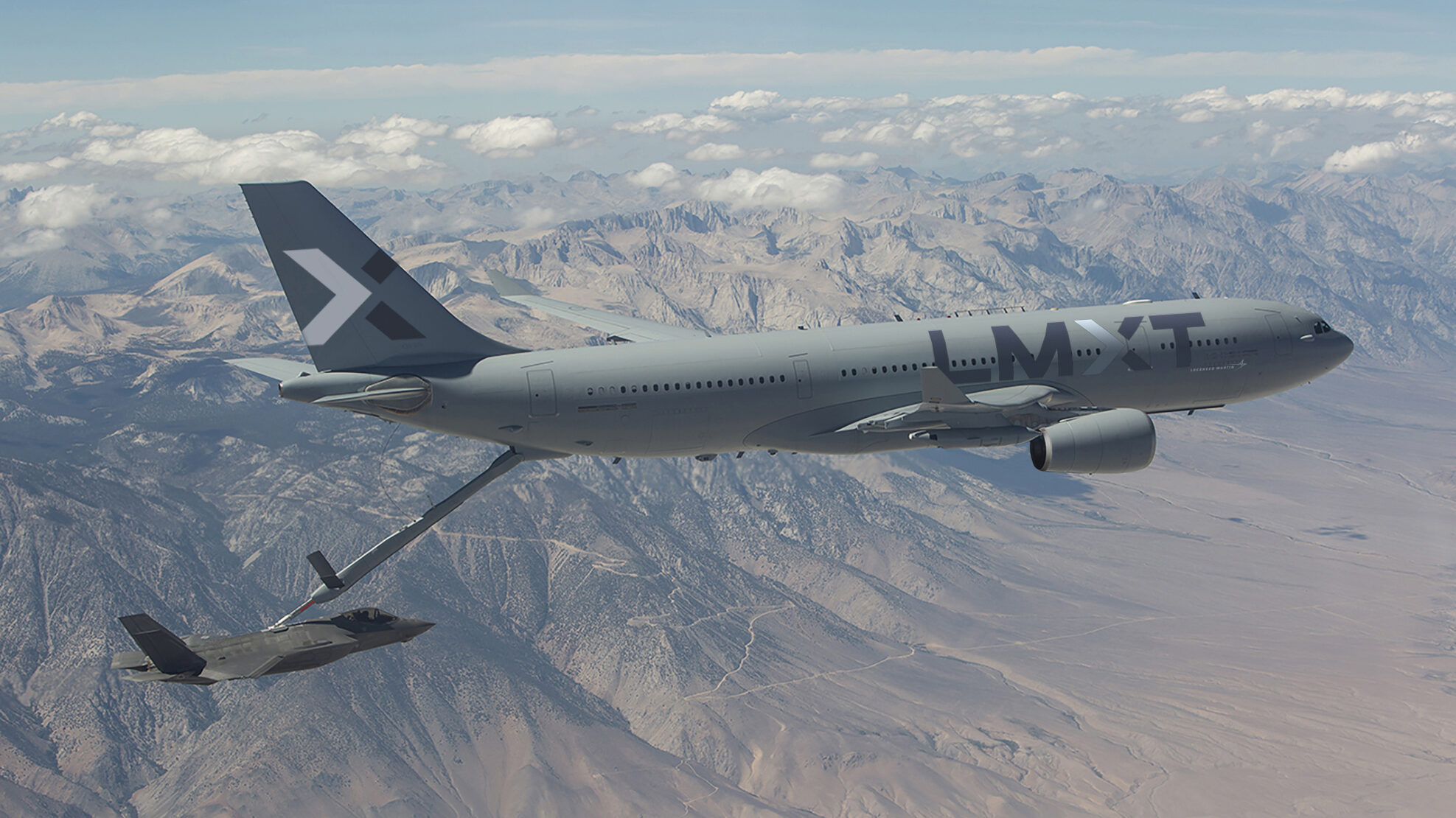
Concept art of a Lockheed Martin LMXT tanker refueling an F-35. (Lockheed Martin)
WASHINGTON: When Lockheed Martin revealed its offering for the US Air Force’s upcoming tanker competition with the promise that the aircraft would be made “by Americans, for Americans,” execs shied away from answering the natural follow up question: Where exactly would the LMXT be built?
Today, the company announced the answer: The aircraft — a variant of the Airbus 330 Multi Role Trainer Transport — will be assembled in Mobile, Ala., before being converted into a tanker in Marietta, Ga., according to Larry Gallogly, Lockheed’s director of the LMXT program.
If Lockheed is chosen to build the new tanker, the program will support about 1,300 new jobs between both facilities, he told reporters during a roundtable.
“We’re really taking advantage of a highly capable, highly experienced workforce at that area,” Gallogly said. “The Mobile facility is also conveniently located in the port, so it makes it very easy for the movement of the large aircraft parts that will be coming into that site.”
The announcement comes as little surprise to those familiar with the two locations. Mobile is Airbus’s major American manufacturing center for commercial airplanes, while Lockheed’s production facility in Marietta has been the home of major mobility franchises like the C-130 Hercules and C-5 Galaxy.
While Airbus’ production facilities in Mobile will be expanded, should Lockheed win the contract, the company plans to repurpose a building that was previously used for C-5 production, Gallogly said.
RELATED: Government watchdog to Air Force: Don’t ok new KC-46 vision system prematurely
The Air Force wants to buy anywhere from 140 to 160 tankers over the course of its upcoming program, which has interchangeably called KC-Y or the bridge tanker program. As the service has expressed a desire to buy non-developmental tankers, LMXT is expected to face off against a next-generation variant of Boeing’s KC-46.
Gallogly said the companies have been told to expect a draft request for proposals sometime this year, with a final solicitation being released around March or April 2023. New tankers could begin rolling off the production line as early as 2029.
The MRTT went head to head against the KC-46 in the Air Force’s KC-X program in the late 2000s, with the service ultimately choosing the KC-46 in 2011. But Gallogly stressed that the upcoming tanker program will have dramatically different requirements than KC-X.
While the Air Force has not finalized those requirements, Gallogly said service officials have repeatedly stressed the importance of fuel offload capacity and being able to connect with other platforms and sensors — a concept that the US military has termed joint all domain command and control.
“With all the focus on China, and the tyranny of distance that exists in that theater, we’ve got a lot of fuel that has to be moved,” he said. “It is the number one priority, and that’s what we have based our our proposed configuration on.”
To amp up the amount of fuel the aircraft can carry, the Lockheed-Airbus team plans to add two fuel tanks to the lower lobe of the aircraft, taking up the space previously used to house two cargo pallets, Gallogly said. The companies have no plans to modify the MRTT’s existing boom or vision system.
“Beyond the fuel, the aircraft has to be a node in the system, and we are planning [to incorporate] a full JADC2 suite,” he said. “These aircraft are going to be persistent in that combat environment. The tankers are going to be out there all of the time.”
The MRTT is currently flown by 13 international customers, including Australia, the United Kingdom, France and a NATO consortium. The A330 aircraft is built in Toulouse, France and converted into a tanker in Getafe, Spain. Production of the MRTT for non-US customers will continue to be based in Europe even if Lockheed wins the KC-Y deal.
“We will be training our US workforce with their counterparts in France and [Spain], so that when we all the tooling and facilities and everything are set up here in the United States and we’re ready to go, that workforce will be very well prepared,” Gallogly said. “It will help the learning curve be incredibly fast and efficient.”





